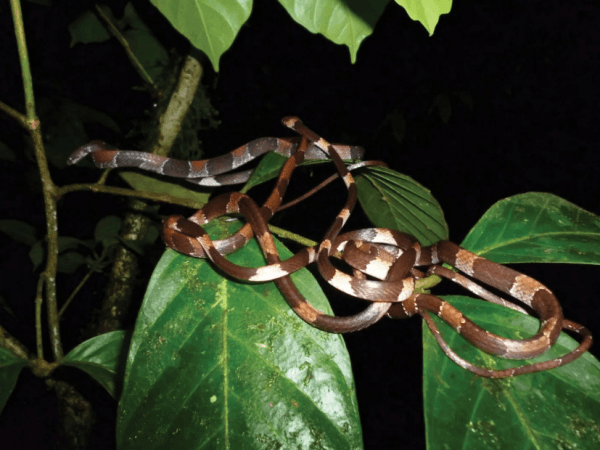Stephenie Meyer wrote in her book, The Host: "Sometimes the best hiding place is the one that's in plain sight." This holds good for a species of snake, that after being documented nearly 50 years ago in Panama, was identified as new species only recently following molecular analyses.
Named Dipsas aparatiritos, the serpent formally received its description as a new species in a recently published multi-institutional study. It was first described in 1977 by Dr. Charles Myers, a herpetologist. While Dipsas refers to the genus of non-venomous snakes found in certain parts of the Americas, aparatiritos is a sobriquet as it means "unnoticed" in Greek, a reference to the snake going undiscovered for 46 years at a well-studied site.
"This work was a true collaboration of scientists from different countries each contributing their expertise to thoroughly understand this new species, morphologically and molecularly," said Dr. Julie Ray, corresponding author of the study. The finding was published in the journal ZooKeys.
Hidden In Plain Sight

Snakes in the genus Dipsas–which consists of over 30 species–are found across Central America and South America. They are slender-bodied and can grow up to 100 cm (39 in) in length. Their diet mainly comprises slugs and snails, owing to which they are also referred to as "snailsuckers".
Much like other species in the genus, D. aparatiritos has characteristic brown-and-black patterns and a bulbous head. It bears a close resemblance with Dipsas temporalis, it's closest known relative which is also found in Panama. D. aparatiritos is endemic to the country. It is currently known to be found only in its western and central regions.
Though a new species, D. aparatiritos has been studied for several years as a part of research focussed on the genus collectively. In fact, the snake was discovered at Parque Nacional General de División Omar Torrijos Herrera, a national park renowned for its snake diversity and a site where extensive studies have been undertaken.

Dr. Ray previously published a study about the dietary habits of snail-eating snakes where it was found that the then-undiscovered species, along with other members of Dipsas largely consumed earthworms from bromeliads (a family of flowering plants). She also co-authored another paper about a diet independent of amphibians contributing to the increase in the D. aparatiritos population.
Need for Conservative Action
Unfortunately, the celebration surrounding D. aparatiritos' discovery could be short-lived if necessary measures are not implemented to save the species–it is already considered 'Near Threatened' according to IUCN Red List standards. A key factor contributing to this is the loss of forest cover.

The cloud forests in Panama, which form the D. aparatiritos' habitat, have already suffered around 44 percent deforestation. According to the authors of the study, necessary actions must be taken for the conservation of this rare reptile. This is of great significance as several species of snakes are just being discovered or described.
"We are in an exciting time in science. Naturalists and scientists must continue to document the natural world; there are many species out there yet to be found and described. The usage of molecular techniques is exciting and facilitates the confirmation of so many new species," concluded Dr. Ray.















